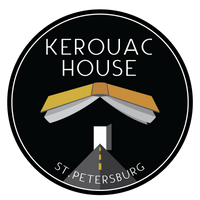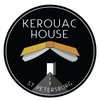By: Bill DeYoung
Most of the voices of the so-called “beat” era – Ginsberg, Ferlinghetti and Kerouac – are long gone. Their words live on, of course, as does the music of David Amram, who is still very much with us.
Amram, 91, will be in St. Petersburg Friday afternoon at 4 for a meet-and-greet at the Jack Kerouac House, the very home where the On the Road scribe spent his final years (Kerouac died in St. Petersburg in 1969).
At 8 p.m., Amram moves to the Palladium Theater’s Side Door cabaret room, where he will perform (on keyboards, presumably, although he is a multi-instrumentalist) along with La Lucha’s Mark Feinberg (drums) and Alejandro Arenas (bass), saxophonist Jack Wilkins and actor Jim Sorensen, who will recite Kerouac’s words as the ad hoc band improvises behind him.
The composer of the film scores for Splendor in the Grass, The Manchurian Candidate and others, Amram was appointed by Leonard Bernstein as the first Composer In Residence for the New York Philharmonic, in 1966.
He is a composer, arranger and conductor, and as a young man in the mid 1950s played French horn in the jazz bands of Charles Mingus, Dizzy Gillespie, Lionel Hampton and Oscar Pettiford.
He has guest-conducted all over the world, and spent 25 years as director of youth and family concert programs for the Brooklyn Philharmonic.
Still, he is in some ways best known for his 12-year association with Kerouac, considered the father of the “Beats.” He and Kerouac began combining poetry readings with improvised jazz in 1957 New York.
He composed the music for the 1959 short film Pull My Daisy, which featured Kerouac, Alan Ginsberg, Gregory Corso and other Eisenhower-era alt-thinkers.
“Since all of us were friends and none of us could remotely be called a beatnik,” Amram told Daily Progress in 1998, “we thought it would be a good idea – maybe for our grandchildren to see some day – to have a little home movie to show what we were actually like. This was going to be a little vignette of an afternoon of us all hanging out together.”
And the Beats go on.
“Back in the ‘50s there was this sense of community and enduring friendships among us, and those friendships have lasted up to the present,” he said.
“I’m constantly giving concerts and going to colleges and schools and talking with young people. They say what they miss in today’s world, and what they would like to find, is a way to pursue their own dreams and have company in doing it like we did.
“I try to give young people the picture that this wasn’t something that was fixed in time. This was and is about a spirit that’s ongoing and continuing.”


